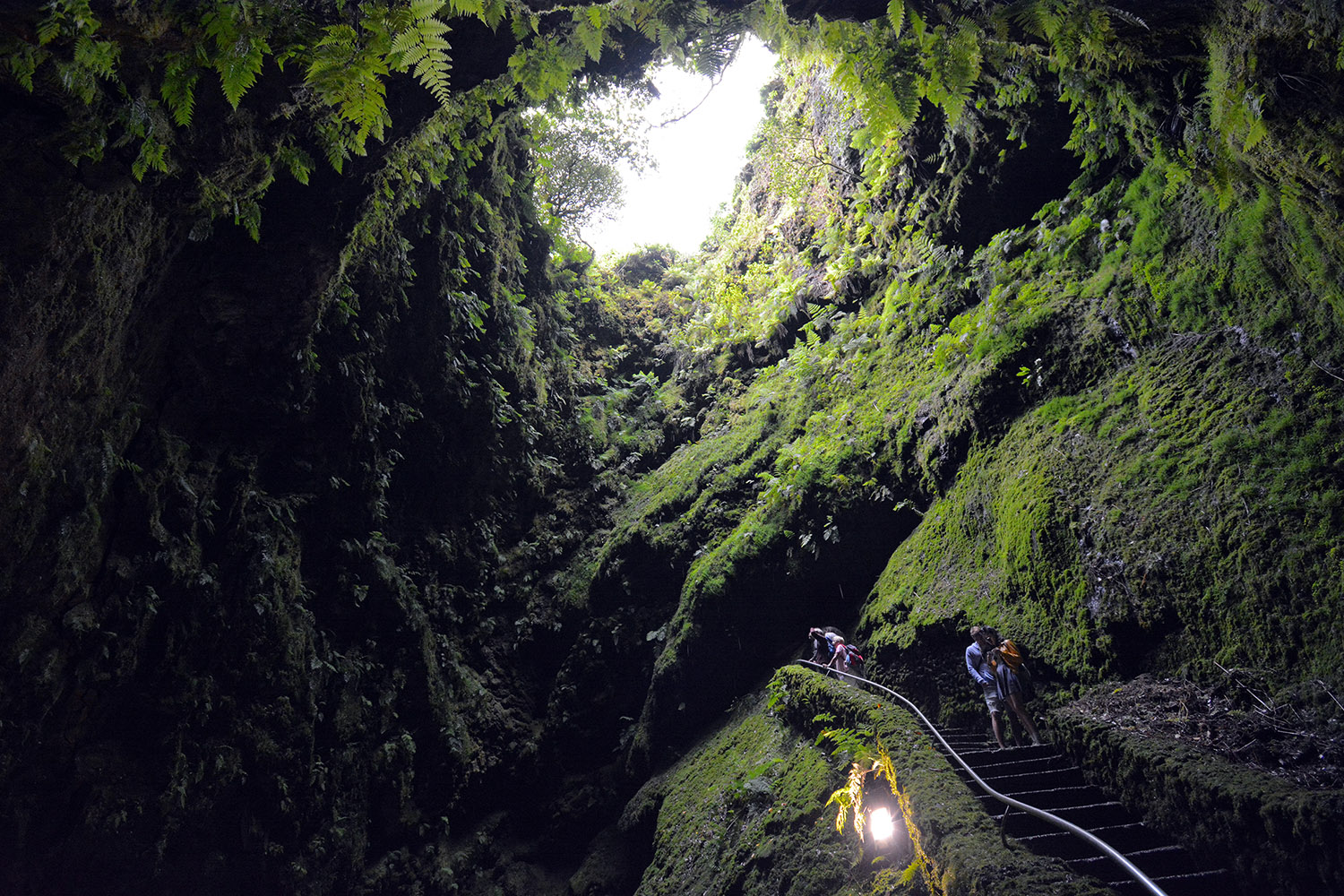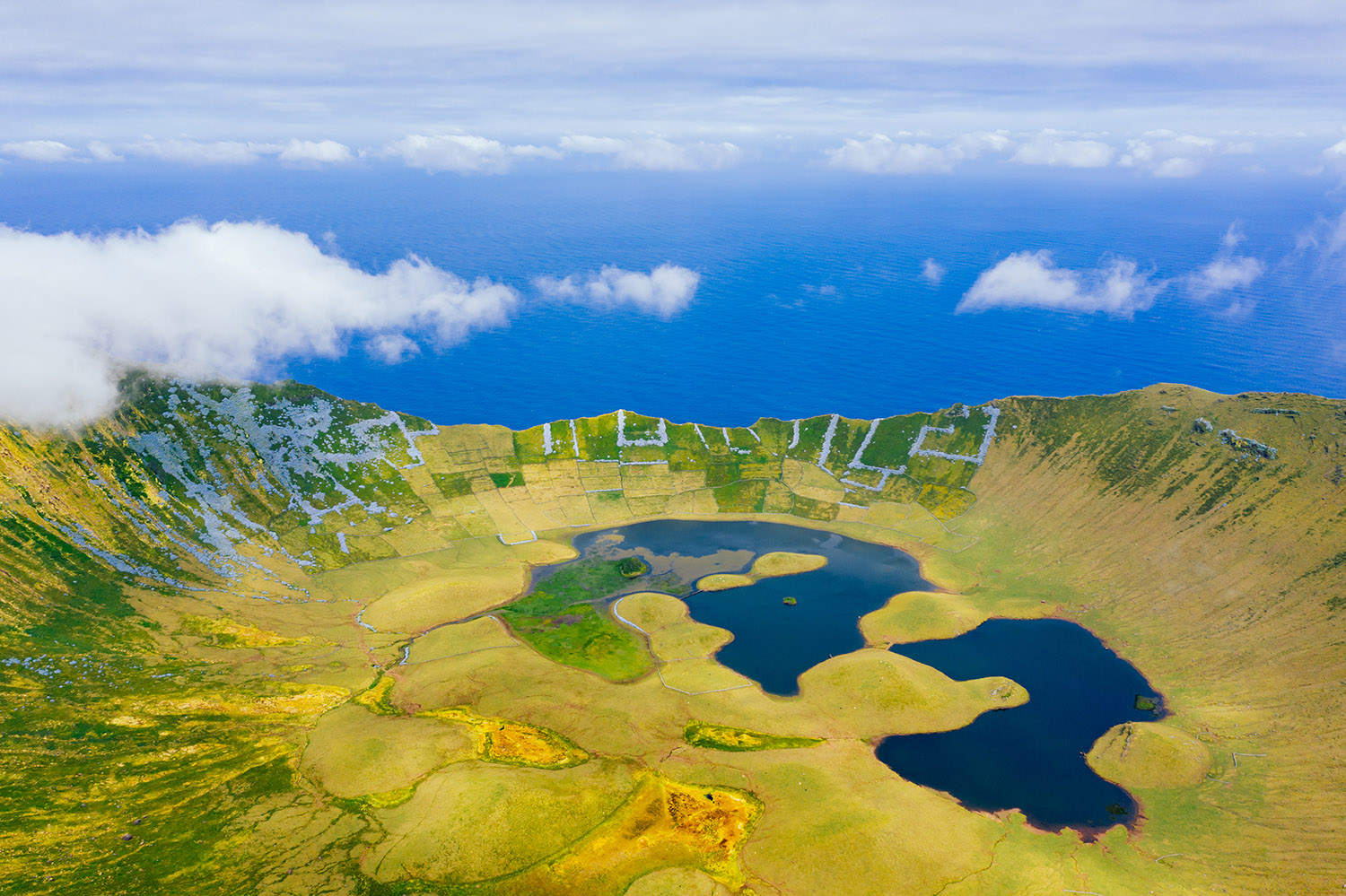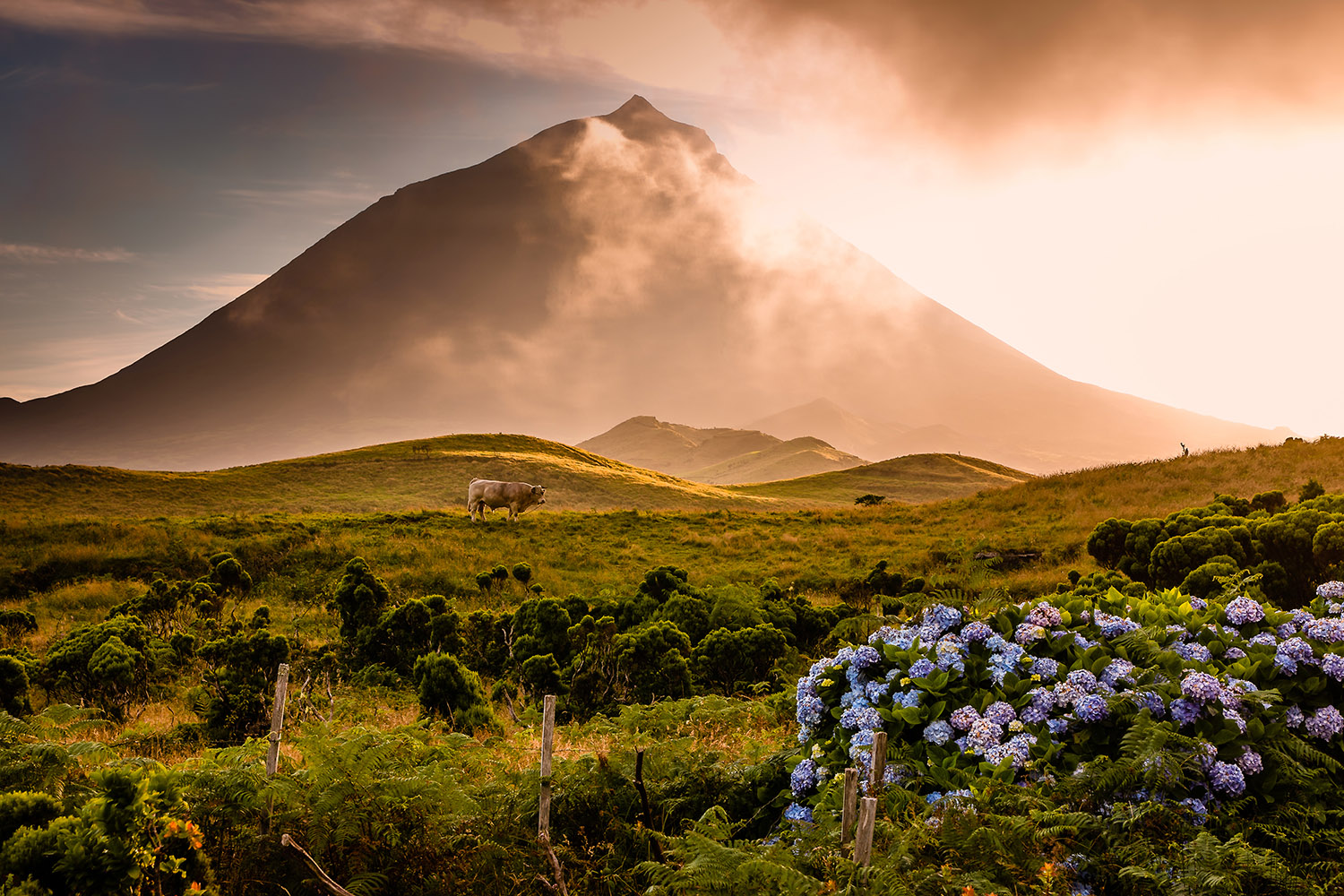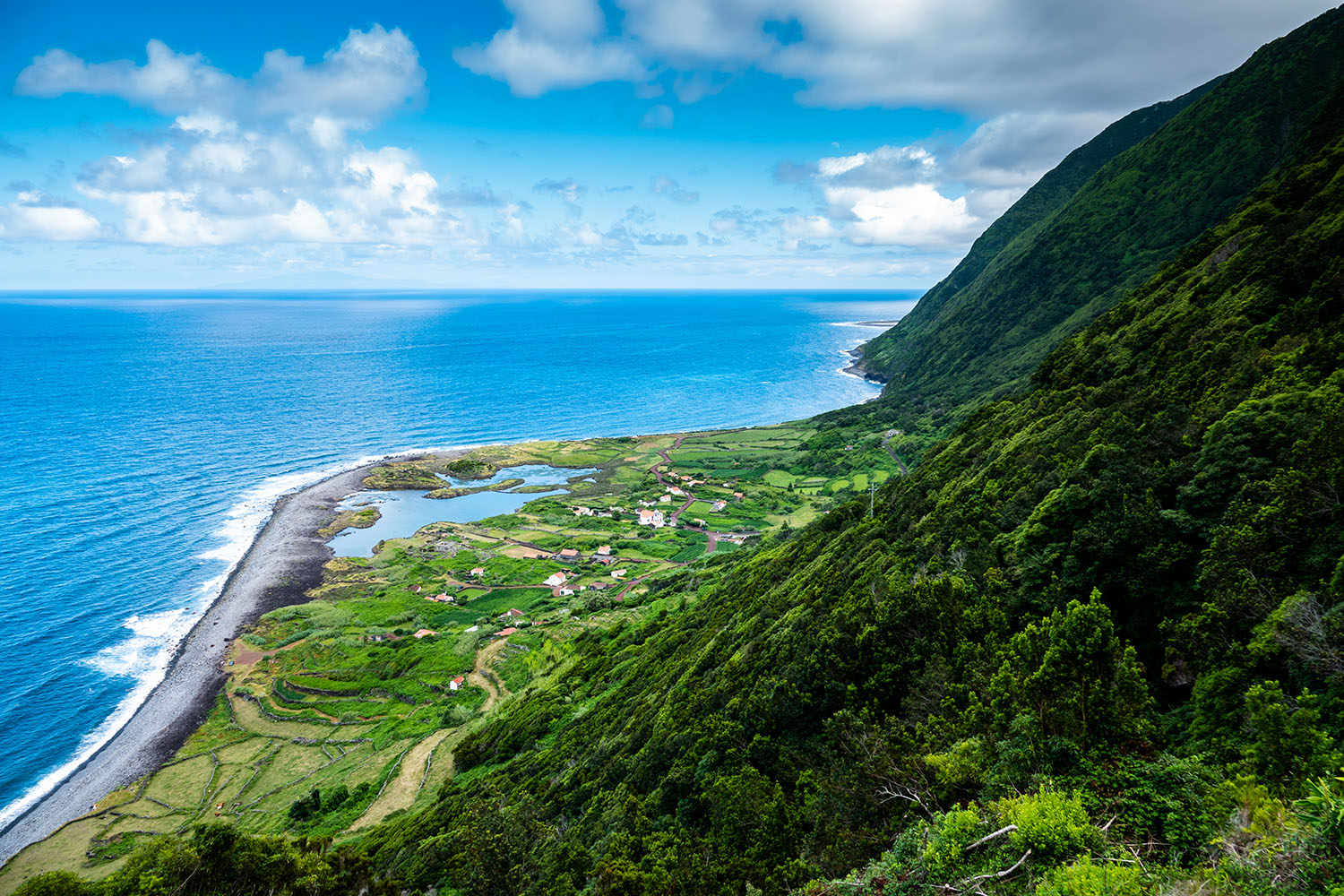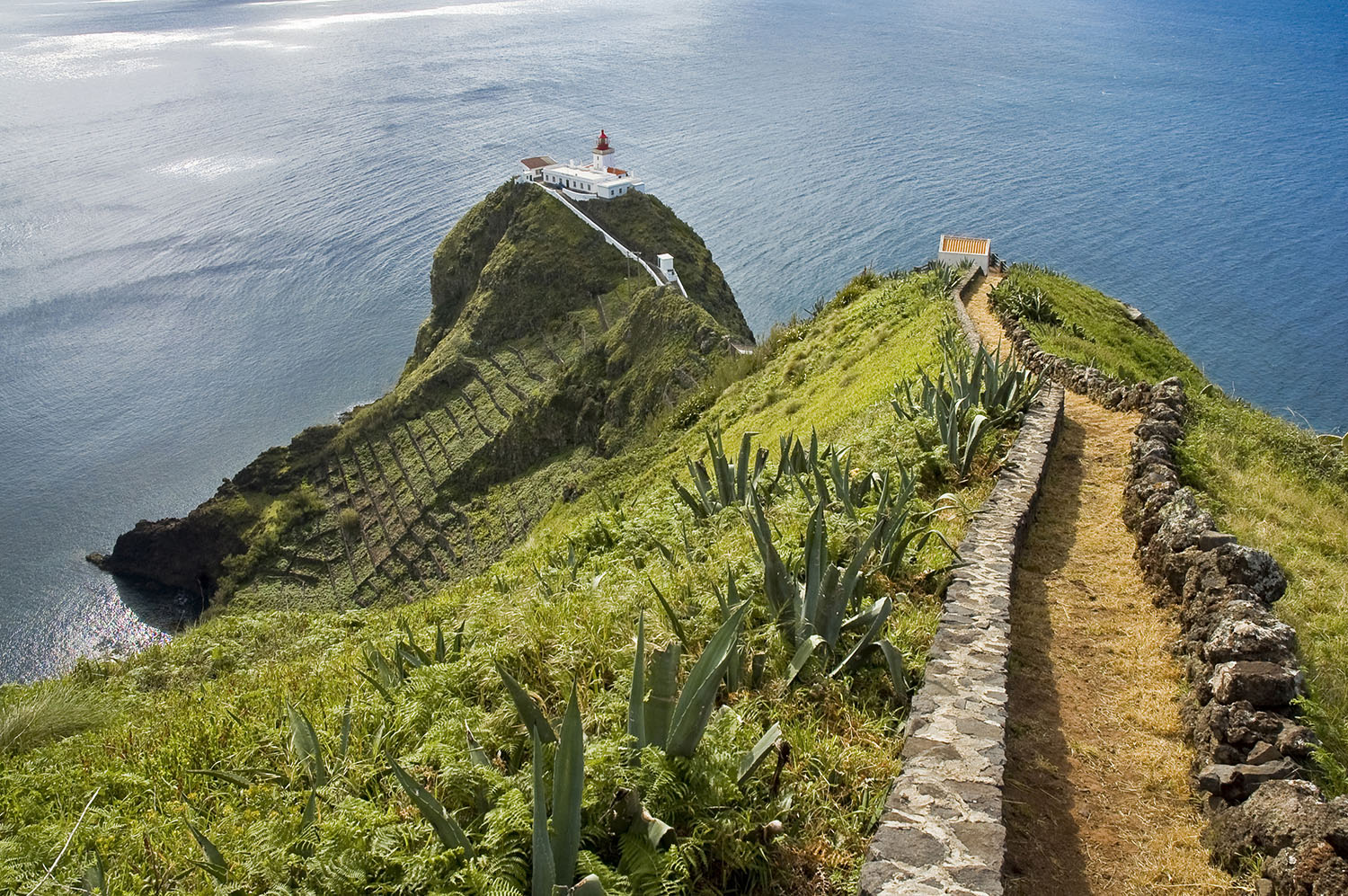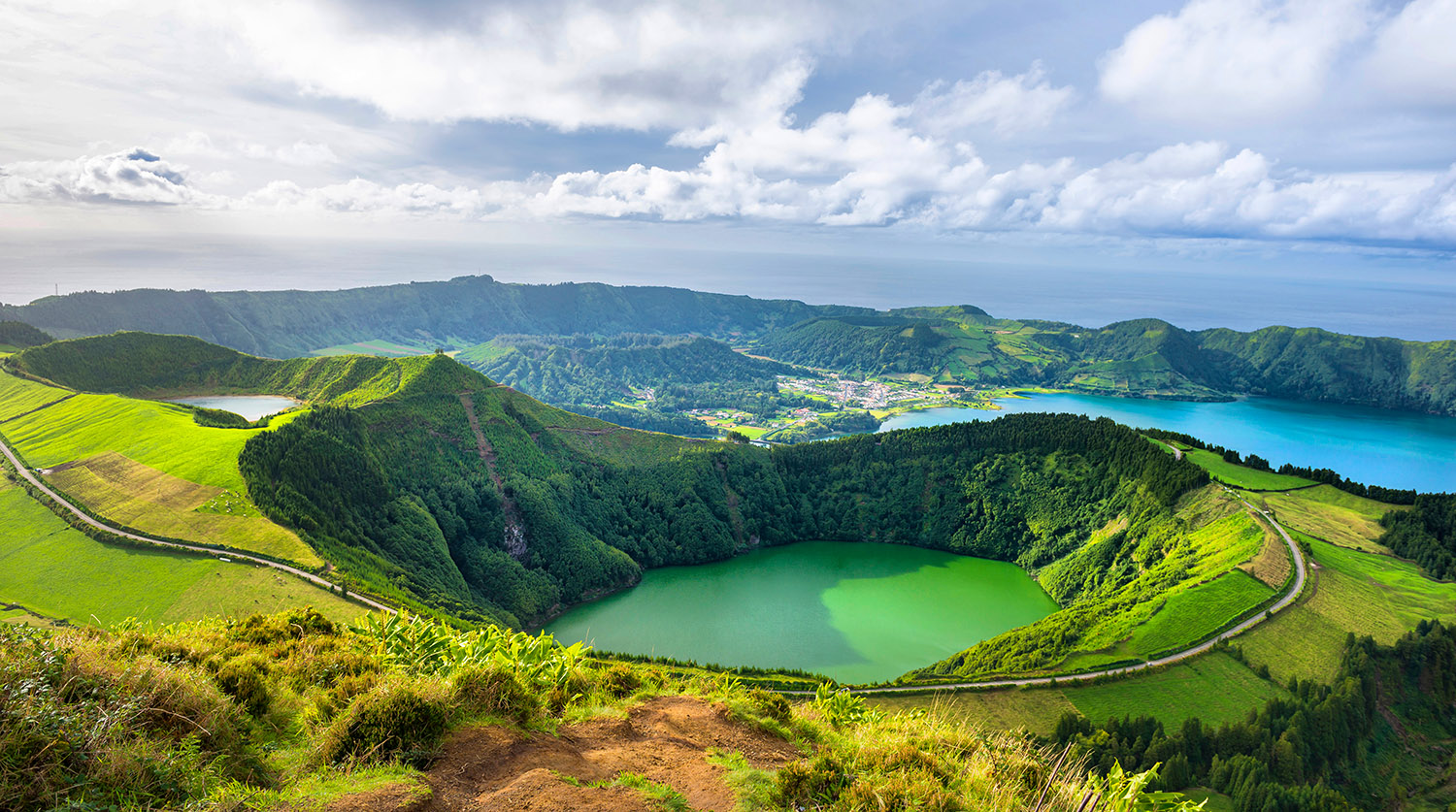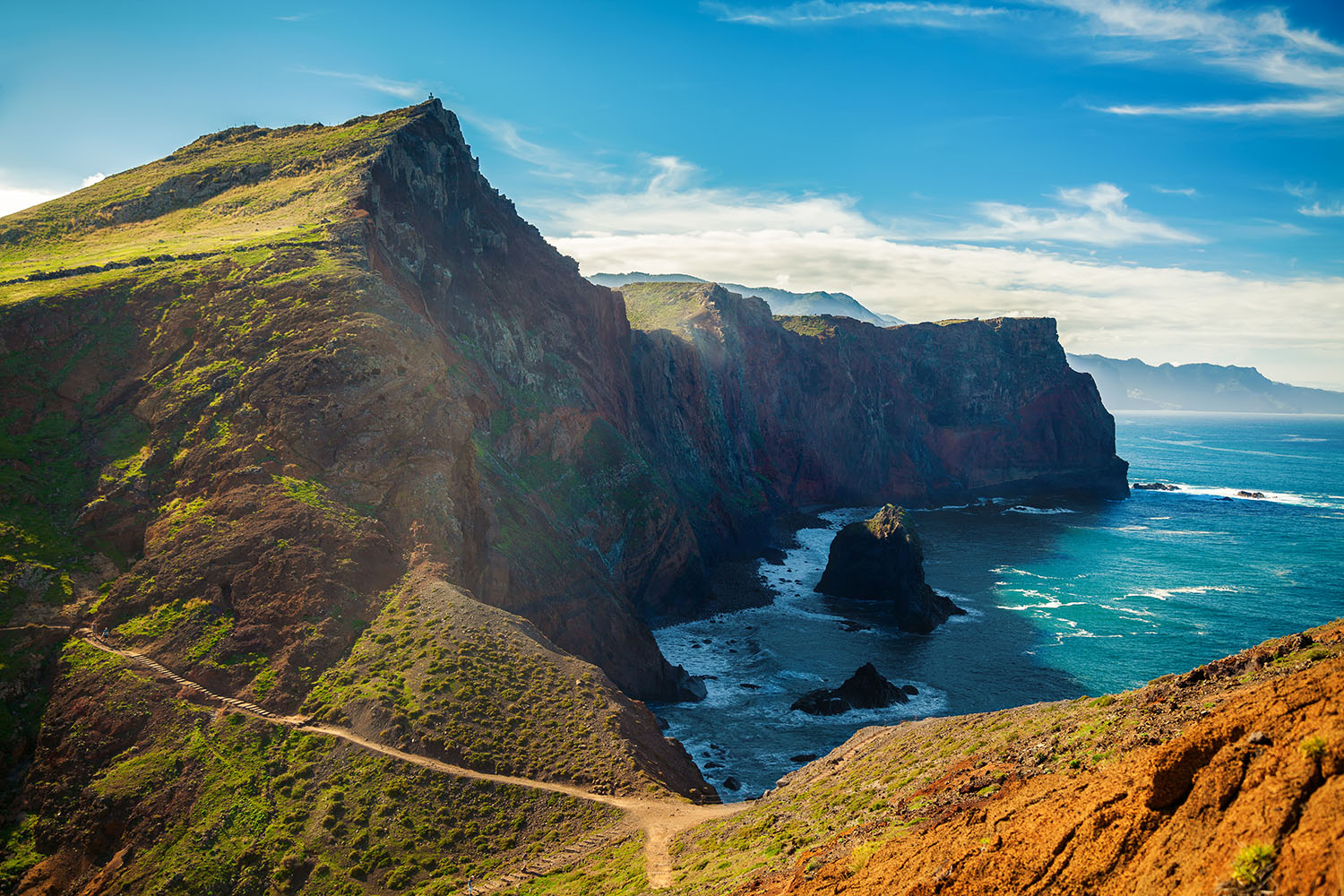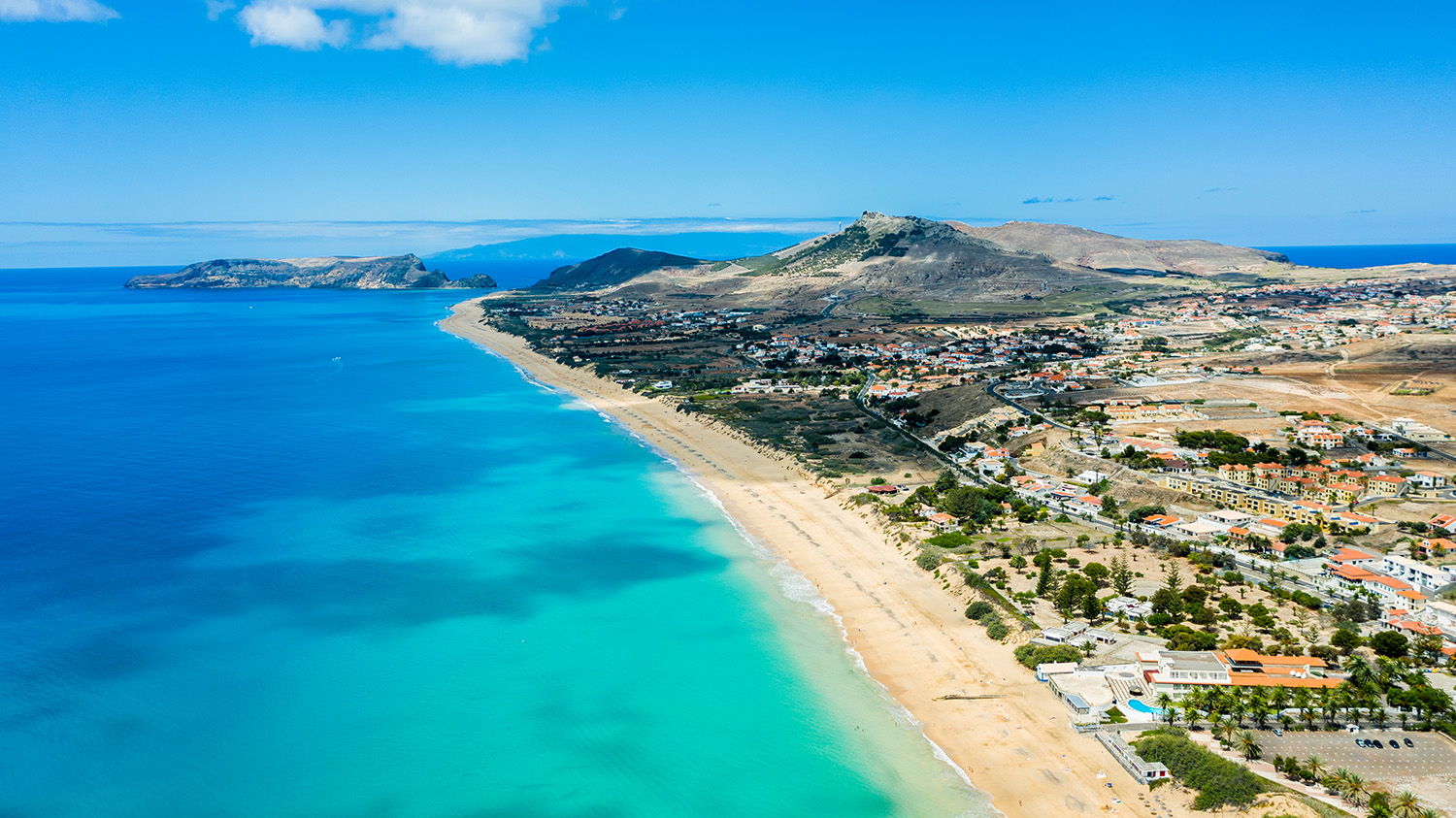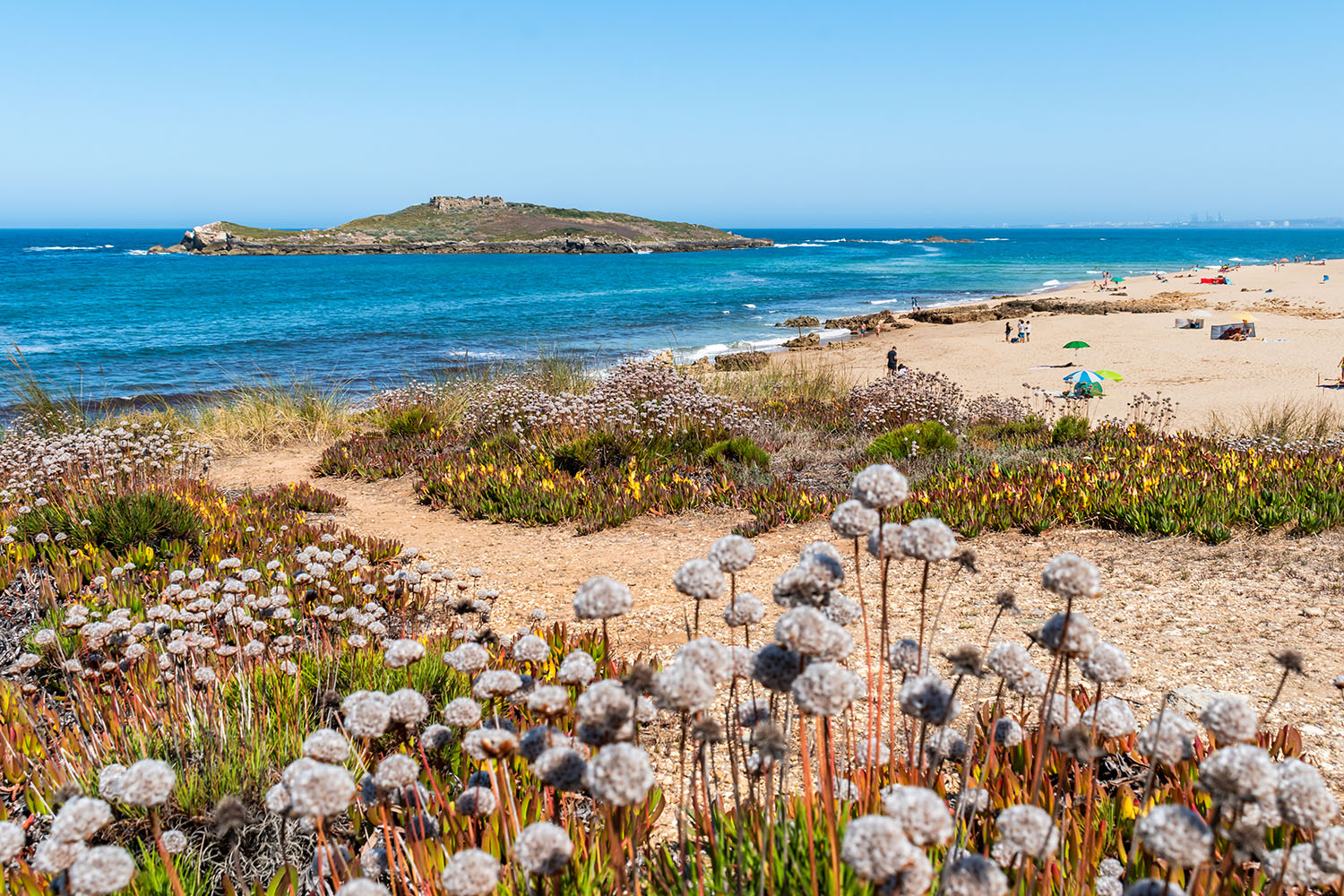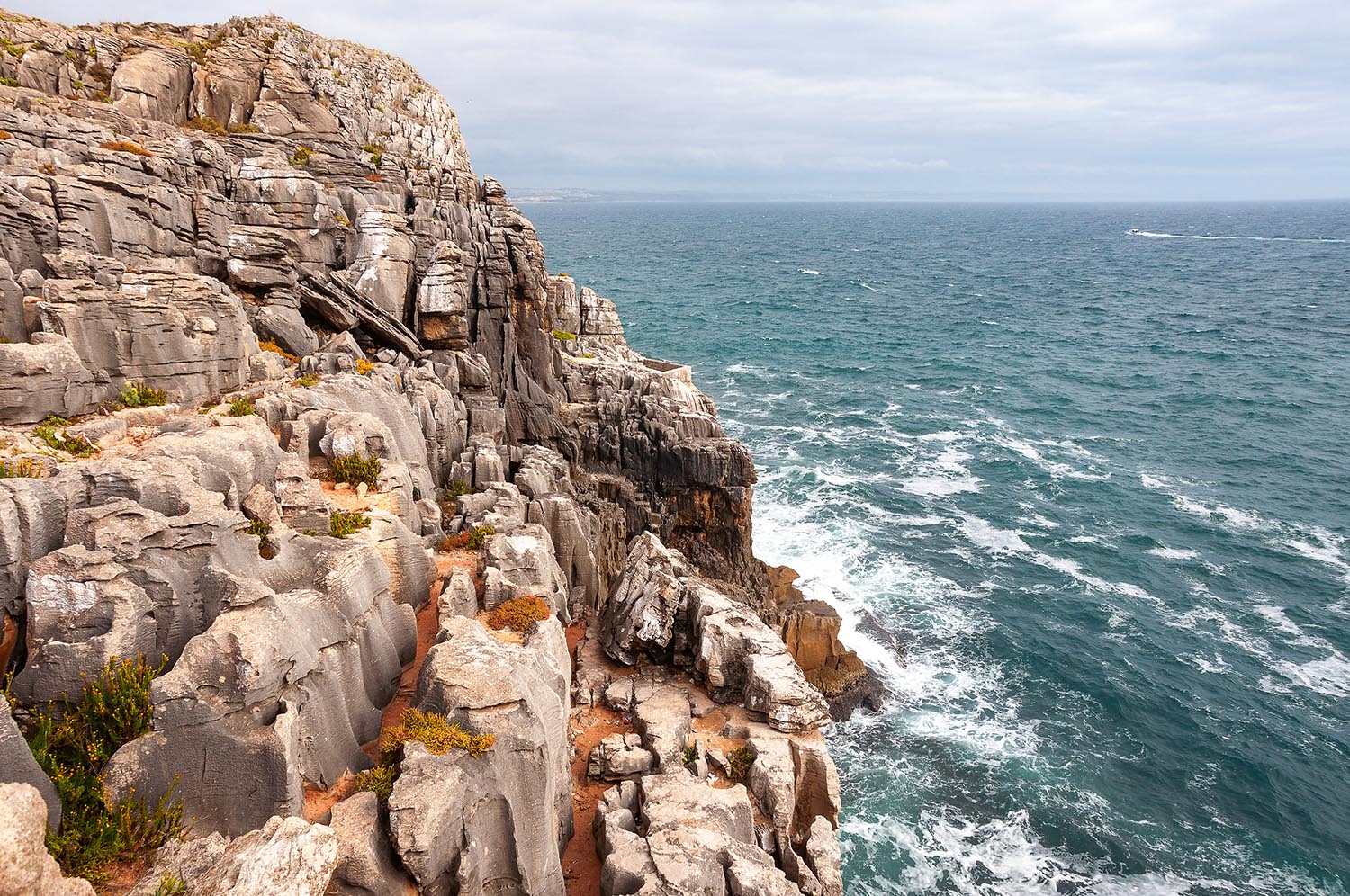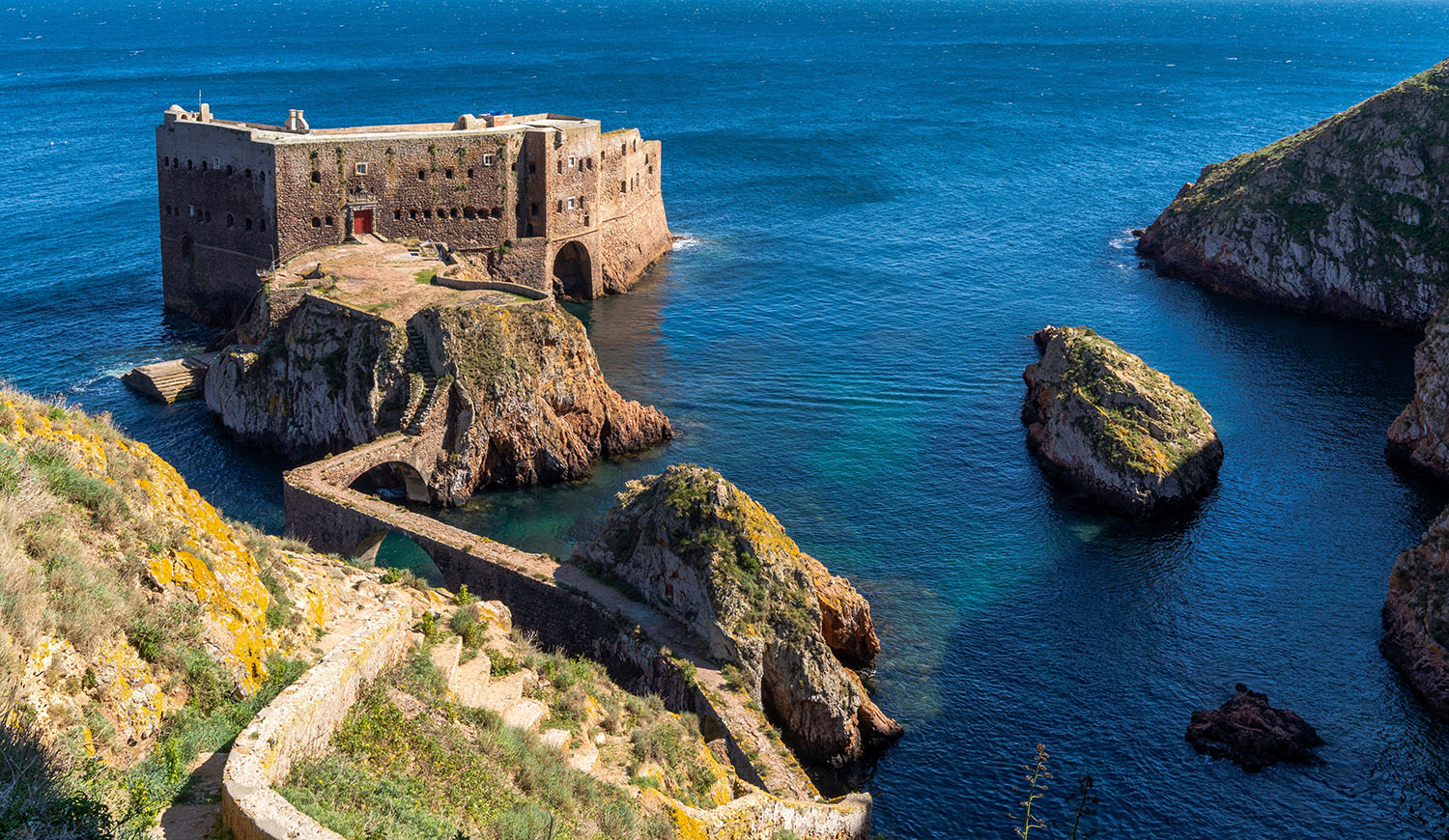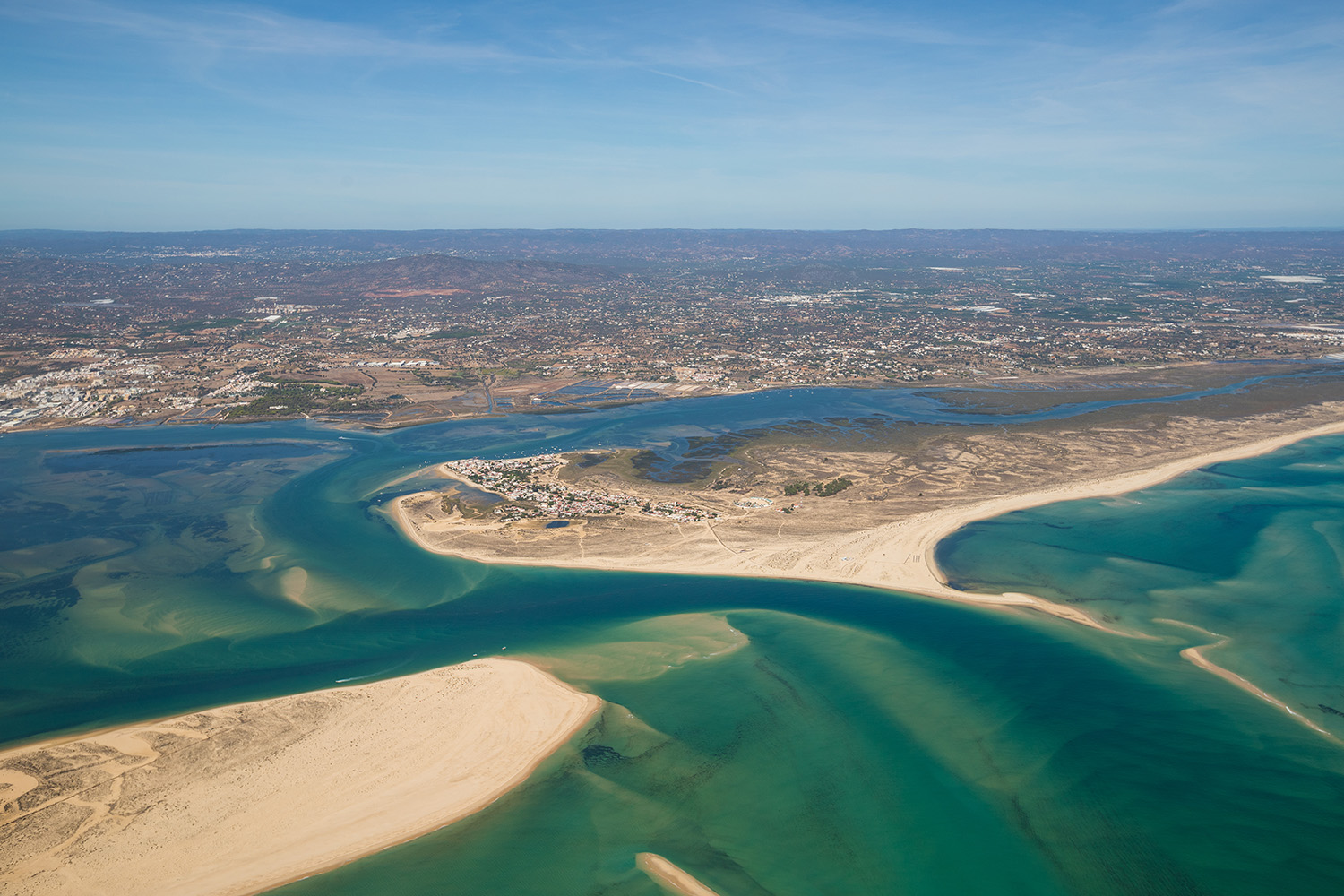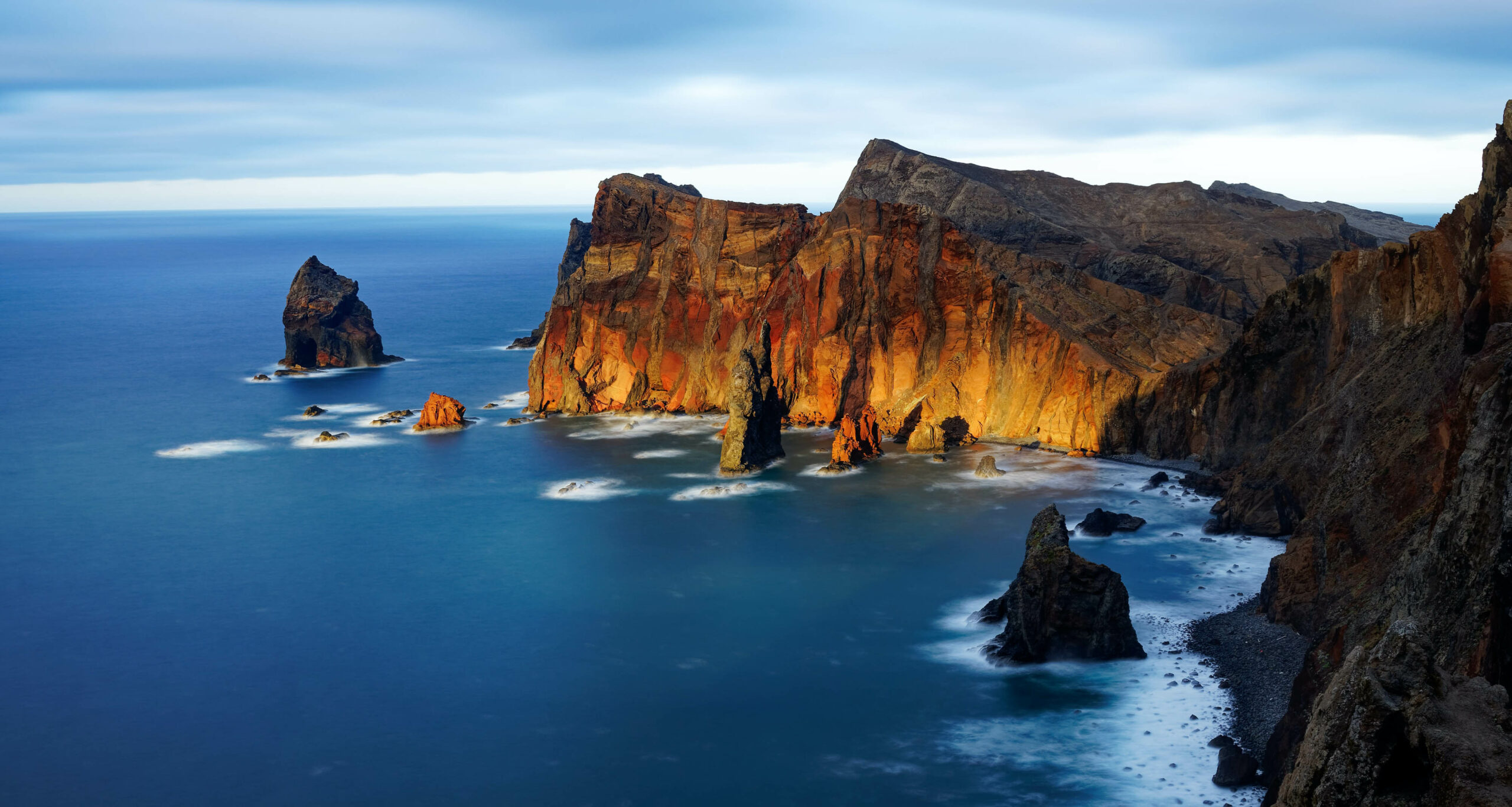
Traveler's Guide: Portugal's Island Paradise
No matter what time of year, the islands of Portugal are true destinations of longing. This applies to the small islands directly on the coast as well as to Madeira or the Azores - dream places in the Atlantic that are more than worth a visit.
April 24, 2022
Washed by the roaring Atlantic, often exposed to fierce winds, Portugal's islands seem at first glance to be desolate places. But a closer look reveals a world of beauty amidst all these forces of nature: majestic orchids, hydrangeas and passion flowers bloom on Madeira. And although the Azores are located in the middle of the Atlantic Ocean, the volcanic islands present themselves as hiking idylls in lush green. The hearty island cheese is also not to be scoffed at here. Just a perceived leap from the mainland, nearby islets off Extremadura, Alentejo and the Algarve offer wave-swept havens, from rugged cliffs in the north to gorgeous sandy beaches.
Indescribable natural spectacles await on Portugal's islands - such as lava caves, like this one on the Azores island of Terceira. © Shutterstock
If you can't decide between the Azores, Madeira and co. because of the many possibilities, you are certainly not alone. Our small travel guide to Portugal's island paradise provides a brief, helpful overview.
The archipelago of the Azores
Green, of volcanic origin and located in the middle of the Atlantic Ocean: The Azores are the destination for all those who long for active vacations and island paradise. The autonomous region includes nine larger and several smaller islands, the capital is Ponta Delgada on Sāo Miguel. Although politically the archipelago belongs to Portugal, geologically it lies between Eurasia and North America - about 1,370 kilometers west of Portugal and 1,930 kilometers from Newfoundland in Canada.
The Northwest Azores
A sight for the gods and the lucky: Corvo Island in the Azores. © Shutterstock
The Azores in the northwest consists of Corvo and Flores. Corvo is the smallest of the nine islands, home to many ravens and the Monte Gordo volcano. Around its caldera lake, hikers will find gorgeous green crater pastures. If you like it more flowery, head to Flores, the "flower island", which also boasts many waterfalls.
The Central Azores
The central Azores are home to the bulk of the archipelago's islands. Island hoppers are rewarded with improbable diversity in the middle of the Atlantic:
Hydrangeas in bloom and the highest elevation of the archipelago: this is how beautiful Pico is. © Shutterstock
Faial is the main landing point for all those who cross the Atlantic. Hydrangeas bloom on the island, and it also has a dreamlike nature and a beautiful mountainous landscape. The volcano Pico , located on the island of the same name, promises the highest elevation of the entire archipelago. The youngest of the islands is ideal for whale watching or wine tasting, which has been declared a UNESCO World Heritage Site. A must-see on Pico is the charming adegas, small vintners' cottages made of lava stone.
It's so green: Sāo Jorge is considered the greenest island in the Portuguese Azores. © Shutterstock
Sāo Jorge is considered the greenest island of the Azores and is known for its spicy cheese, Queijo de Sāo Jorge. Quiet hours are spent on Graciosa , which has its own thermal baths and impressive lava caves, such as Furna do Exofre and Furna da Maria Encantada. Travelers will find this, in addition to great natural pools, also on the neighboring island of Terceira . During a relaxed stroll through the old town in Angra do Heroísmo, it quickly becomes clear why it is a UNESCO World Heritage Site.
The Southeast Azores
Consisting of only three islands, the Southeastern Azores, also known as Grupo Oriental, are ideally suited for a first-time visit to the archipelago.
Santa Maria is the oldest island in the Azores archipelago. © Shutterstock
It is the oldest island of the Azores: Santa Maria. Unlike its neighbors, it is not a volcanic island and is therefore spared from severe earthquakes. Santa Maria is known for its beautiful handicrafts and pottery, white beaches and beautiful bays. In addition, "Santa Maria" has the most hours of sunshine in the archipelago, and it also rarely rains. This makes it the ideal address for sun lovers.
The Formigasare a small group of uninhabited islands that are feared by sailors because of their low altitude. Divers, on the other hand, will find a colorful underwater world rich in species around the abandoned rock turmoil.
Sāo Miguel, a green jewel with unlikely crater lakes. © Shutterstock
Hot springs, improbable lava caves and deep blue crater lakes: São Miguel, the main island of the Azores, knows how to impress. Travelers to Portugal who venture to the island in the middle of the Atlantic Ocean should definitely stop by the Furna Valley: There, soothing thermal springs bubble up from the island's floor. The Sete Cidades caldera, a collapsed volcanic crater with two connected lakes, is also worth a visit. If you would like to follow the example of the inhabitants of the Azores, practice serenity - and treat yourself to unique gourmet delights, such as freshly caught fish or Cozido das Furnas, while strolling through the historic old town of Ponta Delgada.
The archipelago of Madeira
The Madeira Archipelago in the Atlantic Ocean is about 600 kilometers from the northwest coast of Africa and about 1,000 kilometers from the European mainland - quite a long jump from Portugal. However, it is worth it. Visitors are attracted mainly to the two inhabited islands Madeira and Porto Santo. Furthermore, the Madeira archipelago includes the Ilhas Desertas, three small, uninhabited islands called Ilhéu Chāo, Deserta Grand and Bugio, as well as those further south, the Ilhas Selvagens, 13 isolated islets.
Madeira
Madeira, the island of flowers, also convinces active sports enthusiasts with great hiking and biking trails. © Shutterstock
The flower island Madeira attracts with great bike and hiking routes, the spectacular cliff Cabo Girāo, wonderful views from the island's highest mountain, the Pico do Arieiro, and outstanding surf spots. The best island cuisine and relaxed hours are spent in the island and archipelago capital Funchal.
Related: Ask a Local: Nini Andrade Silva's Tips for Madeira
Porto Santo
The paradisiacal sandy beach on Porto Santo also represents a popular vacation destination for Madeira residents. © Shutterstock
Porto Santo, the calm alternative: The highlight is undoubtedly the beautiful, nine-kilometer-long sandy beach da Madeira. During a hike across the island, you will also discover numerous quaint windmills from the 18th century.
Ilha do Pessegueiro of Alentejo
The "peach tree island", as the uninhabited Ilha do Pessegueiro is often called, is a small island that belongs to the Portuguese county of Alentejo. It is located about 250 meters off the coast of Portugal near Porto Covo. Worth seeing here, besides the natural park, is especially a windswept fort from the 16th century. Ilha do Pessegueiro was already settled in the 4th century BC, but the Romans were the first to leave their mark on the small island in the middle of the 1st century.
Ilha do Pessegueiro rises like a great rock from the Atlantic Ocean off the coast of Alentejo. © Shutterstock
Islands of Extremadura
Extremadura, the county in the center of Portugal, which also includes Lisbon, calls a total of four islands its own. For example Baleal, which has some of the best surf spots in all of Portugal, with its rugged cliffs jutting out of the blue expanse.
Surfers are sure to find the perfect wave on the rugged Portuguese island of Baleal. © Shutterstock
Impressive sights are granted by the Berlengas Archipelago west of Capo Carvoeiro on the Peniche Peninsula, which consists of three islands. The largest of these is - nomen est omen - Berlenga Grande, on whose craggy cliffs an abandoned monastery and the old fortress of Sāo Joāo Baptista tower above the Atlantic. The coast also teems with caves and grottos. But be careful: Berlenga is exposed to the wild Atlantic Ocean, so you should only travel here if you don't get seasick easily.
Berlenga Grande is the only one of the Berlengas that is partially inhabited. © Shutterstock
The islands of the Algarve
Off the coast of the Algarve are five islands in the Atlantic Ocean, which makes the dream destination in southern Portugal even more attractive: the Ilha da Armona, the Ilha da Barreta, the Ilha da Culatra, the Ilha da Faro and the Ilha da Tavira. Tours are offered mainly to the islands of Culatra, Faro and Barreta. The islets are located on the south coast in the Parque Natural da Ria Formosa, a chain of islands and lagoon interrupted by natural channels and tideways just off the mainland coast. The very Ilha da Barreta is the southernmost point of Portugal and a hotspot for sailors and windsurfers. Sandy paths and an enchanting lighthouse can be discovered during an excursion to the quiet Ilha do Faro.
Portugal's islands are this beautiful: the Ilha da Barreta in the south of the country. © Shutterstock
Good to know
To visit Portugal, international visitors may need to apply for a Schengen visa. All info about this is available here..

